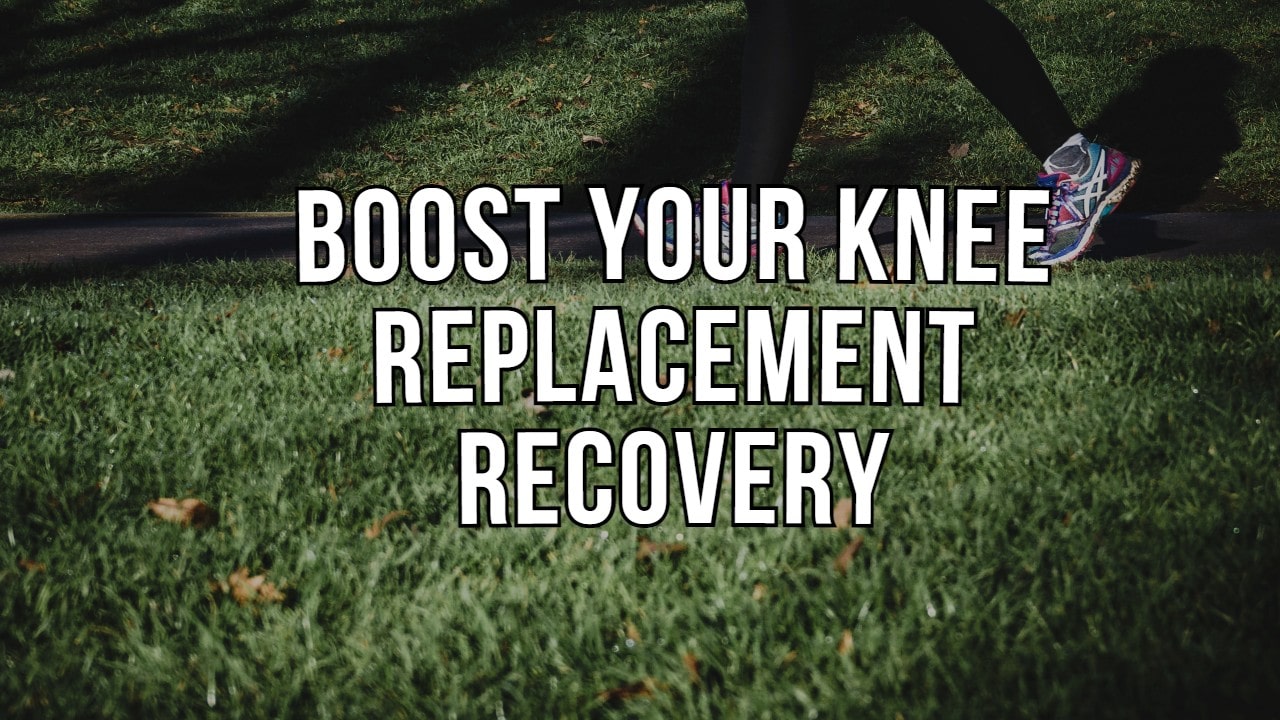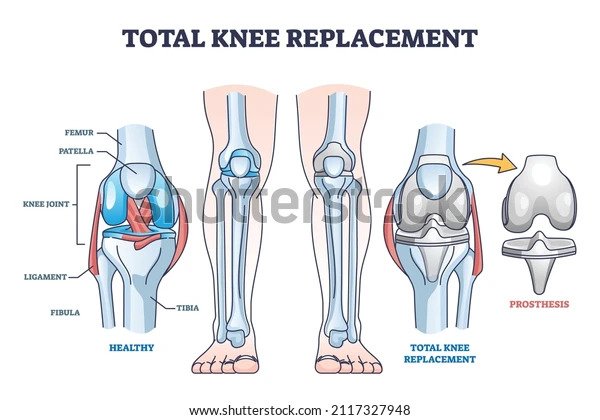Worried about your recovery period after knee replacement surgery? You’re not alone! According to recent stats, almost 800,000 knee replacements are performed each year in the US, and an average recovery period ranges from 6 to 12 months.
Your healing period highly depends on your physical condition and the surgical implant quality. However, shortening the duration of the recovery period is completely in your hands.
Following your doctor’s advice and undergoing continuous physical therapy can help you fasten your knee replacement recovery.
Here are expert tips and guidance to speed up your healing process and get back to your foot within months.
1. Follow Your Exercise Routine Strictly
Almost all physical therapists suggest that regular exercise helps you to build strength and gradually return to your everyday activities. Therefore, it is essential to strictly follow your exercise schedule suggested by your orthopedic surgeon or physical therapist.
According to the American Academy of Orthopedic Surgeons (AAOS), you can begin your low-impact exercises after your surgery. Your physician might suggest you start,
- Walking for 30 minutes daily
- 20-30 minutes of low-impact exercise
Remember, post-operative exercise will help you strengthen your knee muscles and prevent blood clot formation. So, it is crucial to follow your daily exercise routine to enhance your healing from surgery.
As suggested by your doctor, you can continue high resistance exercises after six weeks of knee replacement surgery when you can fully perform your daily activities.
2. Eat A Balanced Diet to Heal Faster
After surgery, your body is already bearing the wear and tear stress of surgery. This stress reaction elevates the need for healthy nutrition and maintaining a balanced diet routine.
Many orthopedic surgeons recommend avoiding food full of calories and have no nutritional value.
The doctors at Proliance Orthopedic Associates recommend the following diet to speed up your recovery:
- Proteins: fish, meat, beans, and nuts will allow your muscles to gain strength and boost your immune system.
- Calcium: Dairy products like milk, cheese, and yogurt will maintain strong bones and help to regain your energy.
- Vitamin C: Fruits, vegetables, and potatoes will help your body make collagen and prevent infections by boosting your immune system.
- Iron: nuts, dried fruits, legumes, and green leafy vegetables are high sources of iron that will fasten the production of blood cells and regain your energy levels.
3. Wear Knee Brace & Use Walking Equipment
Once you’re discharged from the hospital, your doctor will prescribe you to walk using crutches. After your surgery, your knee needs adequate rest to avoid any unnecessary strain that can hinder your recovery. Thus, you must be careful while moving and use walking aids whenever you move.
Wearing your knee braces will facilitate your recovery in the following ways:
- Give extra support to your knee.
- Help you to keep your knee straight.
- Reduces discomfort after surgery.
- Minimize pain and swelling.
Remember, braces and walking aids give rest to your knee joint so that you can recover at a faster rate. Most orthopedics surgeons recommend using crutches or walkers for 3 to 4 weeks after surgery until you can resume your strenuous activities.
4. Wound Care To Prevent Infections
One research estimated that 5.6% of a group of 180 people who had undergone total knee replacement developed surgical site infections.
You can prevent wound infections by following your orthopedic surgeon’s instructions. And if you properly monitor your wounds, they will recover faster.
According to Allina Health, it’ll take 2 to 3 weeks for your wounds to heal. Experts advise the following 5 steps to promote faster wound healing:
- Do not soak your surgical site in water for the first 6 weeks after surgery.
- Wash your hands with soap before touching your wound.
- Do not scrub your wound
- Keep it clean and dry
- Watch for signs of infections that include yellow or green discharge, redness, fevers, or chills.
5. Right Knee Positions After Surgery
A TKR will cause discomfort and pain for some days. For the first 2 weeks of surgery, you must minimize any movements that can hurt your knee. Right knee positions will prevent discomfort and pain during this period, leading to faster recovery.
When seated or lying down, keep your leg straight and place a soft pillow under your knee to elevate it. Also, you should refrain from sleeping on your stomach for 3 to 6 weeks until your knee is completely healed.
Follow the above 5 steps and boost your knee replacement recovery in a few months.
5 Activities to Avoid During Knee Replacement Recovery
1. High-impact Activities
Until your knee completely heals, you must avoid any strenuous activity that may lead to a sudden jerking or twisting of the knee. Some high-impact activities that can hinder your recovery process are:
- Running, jogging, or jumping
- Football, basketball, soccer
- Kneeling
- Gymnastics or any high force exercise
Specialists suggest avoiding any high-impact activity for up to 3 months after surgery. So take complete rest for a few months and gradually resume your daily activities
2. Long Sittings
Prolonged sitting positions increase the risk of swelling and hamper the blood flow towards your lower limb. So, you must not sit for more than 45 to 60 minutes in the first 7 to 10 days.
According to new research, about 1 in 100 patients who undergo knee replacement will develop a blood clot that is also deep vein thrombosis. And sitting for a long time enhances the risk of blood clots. Therefore, it is essential to do low-impact exercises suggested by your orthopedic surgeon.
Check out some of the low-impact exercises advised by all orthopedic surgeons after total knee replacement down below.
3. Wear Proper Shoes
After TKR, your foot swells up even with minimum activity. So, shoe experts recommend wearing shoes with more space, better grips, and decent arch support.
Experts recommend investing in quality walking shoes that positively impact your knee. You must buy shoes that have:
- Decent arch support
- Shock-absorbing cushioning
- Has the right amount of grip
- Easy to clean
- Easy On and off
- Expandable
To find out which shoes are best suited for you, read this article Best Shoes to Wear After Knee Replacement.
4. Sitting on Low Chairs or Beds
Avoid sitting on low chairs and beds for about a few months as any stress on your knee while getting up can dislocate, twist or pivot your leg. After a few days of surgery, your physician recommends you get up or sit down using external support.
One of the best ways to avoid unnecessary stress on your knee is to sit on armchairs at an appropriate height. Your hips must not be lower than your knee, and your thighs must be parallel to the ground.
Also, refrain from sitting on overstuffed sofas or couches as much as possible.
5. Lifting Heavy Weight Objects
A knee replacement takes approximately 6-12 months for complete recovery. Although your knee might not feel pain after some months, you must not forget that it is still healing. And during the healing period, it is best to avoid lifting any heavy-weight objects that can put pressure on your knee.
However, if you are an athlete or a professional runner, your physical therapist will guide you with proper resistance training to strengthen your leg muscles. Following your therapist’s advised workouts will help train your body to lift heavy weights gradually.
4 Pain-Free Exercises to Boost Your Recovery
After your surgery, your therapist counsels you about a proper exercise plan. Following the right exercises will faster your knee replacement recovery. It increases blood circulation to your legs and knees and prevents blood clot formation.
1. Walking
Most orthopedics suggest walking short distances with the help of walking aids. You’ll be allowed to walk out of your hospital room on the discharge day. And after 2 to 3 weeks, you’ll come back to daily physical activities and level up your efforts. Your physician will guide you on the walking technique depending on your physique.
- Gradually stand, balancing your weight on the walker.
- Place your walker forward, and extend your operated knee forward.
- Rest your foot evenly on the floor to balance the impact on your knee.
- As you proceed with the step, your knee will slightly bend
Don’t hasten to walk faster at the beginning. Remember that healing takes time and you will slowly be able to place pressure on your knee.
2. Ankle Pumps
Ankle pumps are the easiest exercise to do right after your knee surgery. It enhances the blood circulation towards your foot and prevents blood clot formation.
- Lie on your back and straighten both your legs
- Move your foot up and down while contracting your calf muscles simultaneously.
- Repeat the steps ten times.
For better results, place a wedge pillow below your knee for support.
3. Ankle Circles
Ankle pumps are followed by ankle circles. This exercise is beneficial when your leg is elevated. Most physicians recommend ankle circles to fasten your blood circulation and reduce swelling. Ankle pumps are completely painless and cause minimum discomfort.
- Lie straight on your back and elevate your legs using a pillow
- Move both your ankles in a circular direction.
- Repeat in the opposite direction
- Do ten repetitions in one direction
4. Easy Quadriceps Stretch
Your physical therapist might recommend you to easy quads stretch during your early recovery. This exercise does not require leg movement and can be done at any time of the day.
- Lie on your back and straighten your leg
- Tighten your thigh muscle and hold for 5 to 10 seconds
- Repeat this quad stretch exercise approximately ten times.
FAQ’s
1. How long will it take me to recover from knee replacement surgery?
According to AAOS, you can resume your normal physical activities in up to 3 to 6 weeks. However, according to one research, the average recovery time ranges from 6 to 12 months, depending on your body condition.
For elder patients, the total recovery period for knee replacement is about 12 weeks. And within 6 weeks, most elder patients notice a significant decrease in the swelling on the surgical site. Remember that you should follow your therapist’s directions to recover faster.
2. What is the best sleeping position after knee replacement surgery?
Soon after your knee replacement surgery, you must be extremely cautious with sitting and sleeping positions. The best position to sleep in is on your back, as it keeps your back and leg straight. Sleeping in the right position will not hinder the blood flow towards your legs.
3. Can I climb stairs after knee replacement?
Yes! Depending on your physical health, your doctor will recommend you to use crutches while moving up/downstairs. After you’ve left the hospital, you’ll be able to move up and down stairs easily. However, some orthopedic surgeons recommend moving up with your good leg and down with your bad leg.
4. Is kneeling possible after knee replacement?
According to AAOS, kneeling is possible after knee replacement surgery but it highly depends on the physical condition of the patient. Soon after the surgery, it might be painful for some patients to kneel, whereas others, having strong muscles, will gain sufficient strength in no time. It is important to discuss your functional abilities with your doctor.
5. Can I drive after knee replacement surgery?
Yes, you can easily drive after knee replacement surgery. But your doctors might recommend you refrain from driving for about 6 to 12 months. It also depends on your recovery period and your ability to bend your knee and resist high-impact activities.
Takeaway
Overall, faster recovery from knee replacement surgery requires extra care and coordination with your physical therapists. AAOS reports that over 90% of patients who have undergone knee replacement surgeries are still functioning successfully 15 years after surgery.
By following the proper instructions of your orthopedic surgeon, you can resume your physical activities and enjoy life within a few months.

PharmD, Salim Habib University | A Medical and Healthcare Writer


